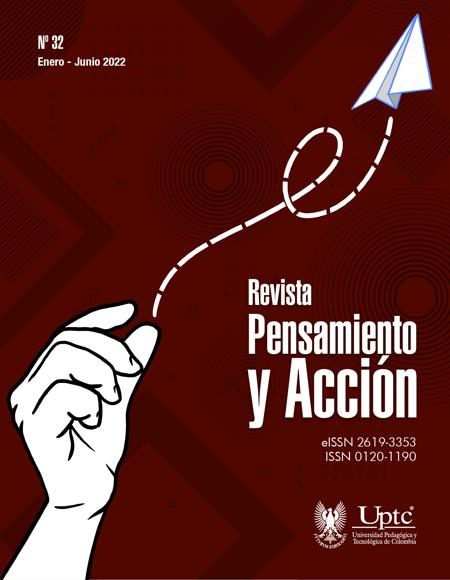Diagnosis of the Incorporation Process (Onboarding) of Personal at ESE Santiago de Tunja

Abstract
Presents the results obtained in the diagnosis of the reception and incorporation system of personnel in the Santiago de Tunja E.S.E, a state social enterprise in the department of Boyacá - Colombia. Focusing its development on how the Onboarding strategy would be developed for a first phase, which seeks to diagnose the procedures established in the organization for the incorporation and retention of a new worker. Therefore, as a first step we focus on the conceptualization of the "reception system" or "incorporation of personnel", with emphasis on the theories proposed by different authors, and considering the clear delimitation of the variables or study dimensions that are presented in the information collection instrument built for that purpose. The development of this instrument was carried out considering a documentary review, in which databases such as Scopus and Science Direct were used, among others. Next, the diagnostic results of the reception system or the incorporation of personnel are determined and presented, by applying the instrument built and validated with the Cronbach's Alpha index. The applied methodology is based on quantitative descriptive research, under the field research model, and data processing that includes the use of statistical software SPSS version 26; as part of the results found, it was possible to establish that the collaborators of the E.S.E. feel motivated within the organization and their perception is that the organization interacts appropriately with them.
Keywords
Training, incorporation, onboarding, retention, personal
References
- Asún, R., Ruiz, S., Aceituno, R., Venegas, J. I., Reinoso, A. (2012). Integración subjetiva y apoyo institucional percibido entre estudiantes de secundaria en Chile. Revista Latinoamericana de Ciencias Sociales, Niñez y Juventud, 10 (1), 321-338
- Bauer, T. (2010). Onboarding new employees: Maximizing success. SHRM foundation’s effective practice guideline series. USA: SHRM Foundation. https://www.shrm.org/foundation/ourwork/initiatives/resources-from-past-initiatives/Documents/Onboarding%20New%20Employees.pdf
- Becker, K., Bish, A. (2021). A framework for understanding the role of unlearning in onboarding. Human Resource Management Review, 31(1), e100730
- Benjumea, L. (2019). Diseño del proceso de incorporación de personal: requisición, reclutamiento, selección, inducción y contratación de la compañía Transportes Terminales S.A. [Tesis de grado]. Universidad Del Valle, Colombia
- Chao, G. (1992). Formal and Informal Mentorships: A comparison on mentoring functions and contrast with nonmentored counterparts. Personnel Psychology, 45, 619-639
- Chiavenato, I. (2011). Administración de recursos humanos El capital humano de las organizaciones. Novena edición. Mc Graw Hill
- Daft, R. (2011). Teoría y diseño organizacional. Décima edición, Cengage Learning Editores, S.A. de C.V.
- Da Silva, M. (2006). Nuevas perspectivas de la Calidad de Vida Laboral y sus relaciones con la eficacia organizacional [Tesis Doctoral]. Universidad de Barcelona, España
- Da Silva, R. (2002). Teorías de la administración. Thomson Learning
- Dolan, S. L., Valle Cabrera, R., Jackson, S. E., Schuler, R. S. (2007). La gestión de los recursos humanos. Cómo atraer, retener y desarrollar con éxito el capital humano en tiempos de transformación. McGraw-Hill
- Ellis, A. (2017). Newcomer adjustment: Examining the role of managers’ perception of newcomer proactive behavior during organizational socialization. Journal of Applied Psychology, 102, 993–1001
- González Alonso, J., Pazmiño Santacruz, M. (2015). Cálculo e interpretación del Alfa de Cronbach para el caso de validación de la consistencia interna de un cuestionario, con dos posibles escalas tipo Likert. Revista Publicando, 2(1), 62-67
- Haslam, S. A., Ellemers, N. (2005). Identidad social en psicología industrial y organizacional: Conceptos, controversias y aportes. Revista internacional de psicología industrial y organizacional, 20 (1), 39-118
- Hernández, R., Fernández, C., Baptista, M. (2014). Metodología de la investigación, 6ta Edición. McGraw-Hill Education
- Kammeyer-Mueller, J., Wanberg, C. (2003). Unwrapping the organizational entry process: Disentangling multiple antecedents and their pathways to adjustment. Journal of Applied Psychology, 88(5), 779–794
- Klein, H., Heuser, A. (2008) The learning of socialization content: a framework for researching orientating practices. Emerald Group Publishing Limited
- Lodos, H. (2011) Lo emocional en las marcas. Universidad de Palermo. https://www.yumpu.com/es/document/read/10427802/lo-emocional-en-las-marcas-universidad-de-palermo
- Marín, D., Cuartas J. (2017) Fundamentación teórica de la cultura, la estructura y la estrategia de la organización: Referentes para el análisis y diseño organización. Universidad Externado de Colombia
- Rosas, M. (2015). Propuesta de implementación del proceso de onboarding como apoyo a la gestión del talento humano [Tesis de maestría]. Universidad Panamericana
- Van Maanen, J. (1978). People processing: Strategies of organizational socialization. Organizational Dynamics, 7(1), 19–36
- Wanberg, C. (2012) The Oxford Handbook of Organizational Socialization. Oxford University Press https://evolutioninvest.com/2020/12/02/la-evolucion-del-onboarding/